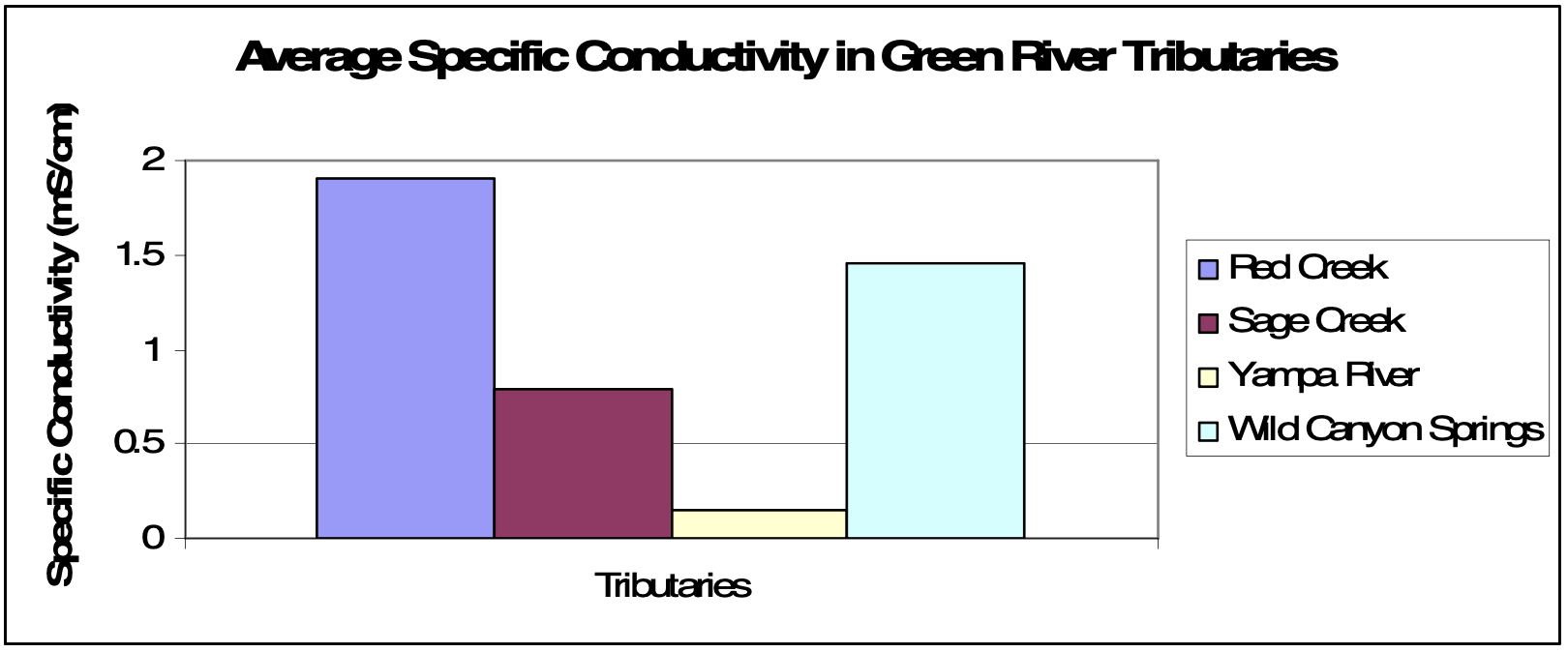A rather surprising discovery on our trip was how sensitive specific conductivity (SC) is to water volume in the Green River Basin. This is particularly evident when evaluating Green River tributary SC values (Figure 1). Red Creek and Sage Creek were both much smaller than the Green River. In these creeks, the SC values were much larger than the main channel of the Green River, which ranged from 0.26-0.273 mS/cm at the Sage Creek site and 0.694-0.697 mS/cm at the Red Creek site. The SC value of Wild Canyon Springs is high not only due to its small volume of water, but natural springs are characterized by their “hard” (high mineral content) water. Conversely, the SC values in the Yampa River were much smaller than those of the Green River, which ranged from 0.578-0.596 mS/cm. The Yampa River volume is quite a bit larger than that of the Green River in early summer due to base flow releases from the Flaming Gorge Dam. What’s even more interesting is how the SC values changed subsequent to the Green-Yampa confluence. They dropped to 0.157 mS/cm at the Echo Park Ranger Station about a third of a mile downstream from confluence and ranged from 0.260-0.374 mS/cm until our final sampling site at Ford Island (RM 211.5). It is evident that the Yampa River had a notable impact on the SC values of the Green River due to its large volume. Another factor that impacts SC values is the type of rock surrounding each of the rivers. Streams at 25°C running through limestone formations typically have higher SC values than streams running through granite, silicon or igneous rock. However, the Yampa Canyon, consisting of layers of sandstones, limestones and shales, is similar to the geology surrounding the Green River. This must indicate that the high flow volumes in the Yampa River dilute the dissolved minerals enough to make it much lower than that of the Green.

Figure 1. Specific Conductivity values in three tributaries of the Green River (6/13/06-6/21/06).
